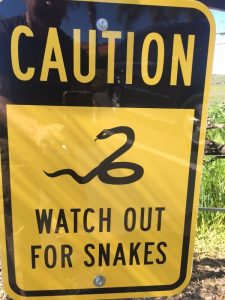
“There’s no art to find the mind’s construction in the face: He was a gentleman on whom I built an absolute trust.” Macbeth ( 1.4.12-14)
“Trade secret law also helps maintain ‘standards of commercial ethics….’[Citation.] … By sanctioning the acquisition, use, and disclosure of another’s valuable, proprietary information by improper means, trade secret law minimizes ‘the inevitable cost to the basic decency of society when one … steals from another.’ [Citation.] In doing so, it recognizes that ‘good faith and honest, fair dealing, is the very life and spirit of the commercial world.’” (Altavion, Inc. v. Konica Minolta Systems Laboratory Inc. (2014) 226 Cal.App.4th 26, 42 citing DVD Copy Control Assn., Inc. v. Bunner (2003) 31 Cal.4th 864, 881.) This is exactly what is at stake in most trade secret cases – honesty, ethics and fair dealing
Most trade secret cases are is not about the formula to Coke, but rather, as in the San Jose Const., Inc. case, it is about having all the pieces to the puzzle. (San Jose Const., Inc. v. S.B.C.C., Inc. (2007) 155 Cal.App.4th 1528, 1539.) In this regard, California’s version of the Uniform Trade Secret Act (“UTSA”) defines a “trade secret” as “information, including a … compilation … that: (1) Derives independent economic value, actual or potential, from not being generally known to the public or to other persons who can obtain economic value from its disclosure or use; and (2) Is the subject of efforts that are reasonable under the circumstances to maintain its secrecy.” (Civ.Code, § 3426.1, subd. (d).) (San Jose Const., Inc. v. S.B.C.C., Inc. (2007) 155 Cal.App.4th 1528, 1537.)
However, as shown below, each of these elements involve a questions of fact.
Additionally, the statute includes a nonexclusive list of certain types of “information,” which includes, but is not limited to, “a formula, pattern, compilation, program, device, method, technique, or process.” As discussed below, the term “information” is not a significant limitation, as trade secrets may consist of any and all types of facts, ideas, devices, methods, or combinations thereof, regardless of whether it is novel or inventive, as long as the other requirements for establishing a trade secret are satisfied, i.e., that the “information” is secret and has independent economic value.
As the Altavion, Inc. case held,
‘Information’ has a broad meaning under the [UTSA].” (Trade Secrets Practice in Cal., supra, § 1.4, p. 1–5; see also Forro Precision, Inc. v. International Business Machines Corp. (9th Cir.1982) 673 F.2d 1045, 1057. “The definition of trade secret is … unlimited as to any particular class or kind of matter…“[A] trade secret may consist of any formula, pattern, device or compilation of information which is used in one’s business, and which gives him an opportunity to obtain an advantage over competitors who do not know or use it.” (Emphasis added) (Altavion, Inc. v. Konica Minolta Systems Laboratory Inc. (2014) 226 Cal.App.4th 26, 53.)
It is exactly this compilation of information that is at issue in many trade secret cases.
The Completed Puzzle
“Even still, you’re not going to divulge everything.”
The San Jose Construction case is worthy of a close examination. In San Jose Construction, the employer, San Jose Construction (“SJC”), filed suit against its former employee, Foust, and Foust’s new employer, South Bay Construction Company (“S.B.C.C.”), for among other things, Misappropriation of Trade Secrets. Foust gathered information, contacted clients and had contracts and projects moved to his new employer while he was still fully employed by SJC. Foust was not an officer, director nor owner of SJC. In San Jose Construction, the Defendant filed summary judgment claiming that there could be no trade secrets because the information in contention was public, was created by and/or published to third parties and much of it was created by Foust while he worked at SJC. Moreover, the defendants argued that the information could not be trade secrets because third parties were free to share it with anyone they chose. However, the San Jose Construction Court reversed summary judgment noting that,
As SJC describes it, “only SJC had the completed puzzle for each project, contained in the Project Binders…. No third party had it. The subcontractors each had a piece, and the owners had a piece, but no one except SJC had it all.” (San Jose Const., Inc. v. S.B.C.C., Inc. (2007) 155 Cal.App.4th 1528, 1538-1539.)
In many cases, only the trade secret Plaintiff has the “completed puzzle” for what constitutes the trade secrets, to the exclusion of any competitors.
The next few posts will examine the question of what can be trade secrets
Visit us at: www.ca-nvlaw.com
